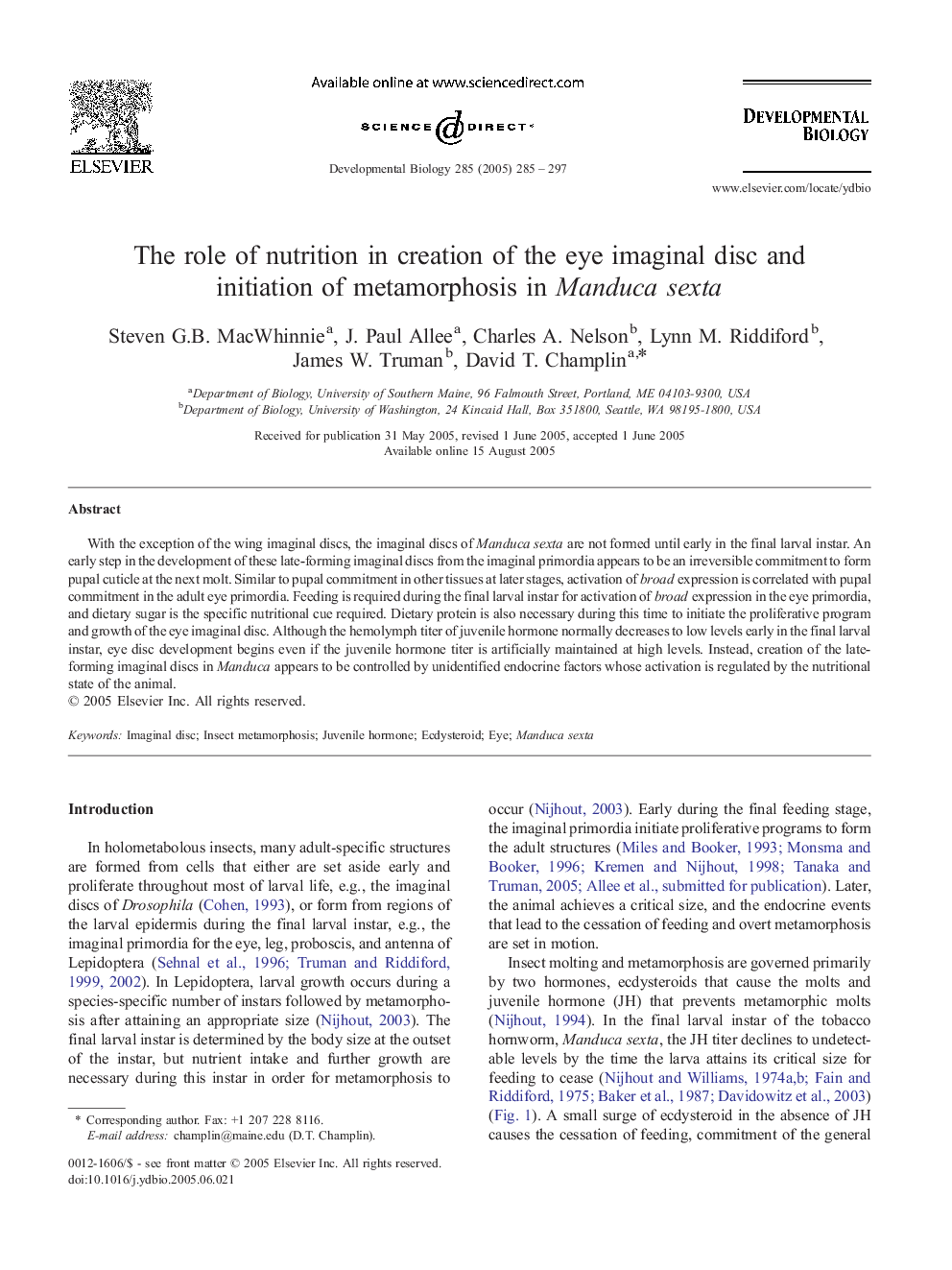| Article ID | Journal | Published Year | Pages | File Type |
|---|---|---|---|---|
| 10934014 | Developmental Biology | 2005 | 13 Pages |
Abstract
With the exception of the wing imaginal discs, the imaginal discs of Manduca sexta are not formed until early in the final larval instar. An early step in the development of these late-forming imaginal discs from the imaginal primordia appears to be an irreversible commitment to form pupal cuticle at the next molt. Similar to pupal commitment in other tissues at later stages, activation of broad expression is correlated with pupal commitment in the adult eye primordia. Feeding is required during the final larval instar for activation of broad expression in the eye primordia, and dietary sugar is the specific nutritional cue required. Dietary protein is also necessary during this time to initiate the proliferative program and growth of the eye imaginal disc. Although the hemolymph titer of juvenile hormone normally decreases to low levels early in the final larval instar, eye disc development begins even if the juvenile hormone titer is artificially maintained at high levels. Instead, creation of the late-forming imaginal discs in Manduca appears to be controlled by unidentified endocrine factors whose activation is regulated by the nutritional state of the animal.
Related Topics
Life Sciences
Biochemistry, Genetics and Molecular Biology
Cell Biology
Authors
Steven G.B. MacWhinnie, J. Paul Allee, Charles A. Nelson, Lynn M. Riddiford, James W. Truman, David T. Champlin,
